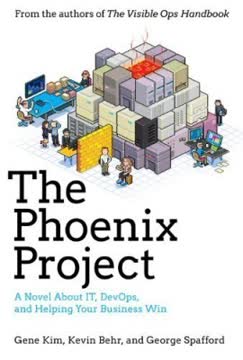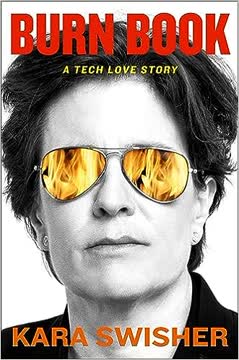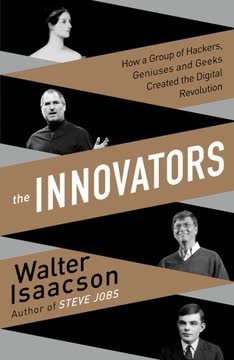Key Takeaways
1. Silicon Valley's Transformation: From Orchards to Tech Hub
"In a bucolic farming region fragrant with orchards and known as the Valley of the Heart's Delight, the new arrivals built suburbs and shopping malls."
From agriculture to innovation. The San Francisco Peninsula underwent a dramatic transformation in the late 1960s and early 1970s. The once-pastoral region, known for its fruit orchards, rapidly evolved into a hub of technological innovation. This change was driven by an influx of young, educated professionals drawn to the area's burgeoning electronics industry.
Key drivers of change:
- Establishment of research facilities by companies like Lockheed, IBM, and Sylvania
- Growth of homegrown electronics giants like Hewlett-Packard
- Birth of numerous microchip companies in a short span
- Tripling of the population from 300,000 in 1950 to over 1 million by 1970
The transformation wasn't without its challenges. Long-time residents watched as orchards were replaced by housing developments and industrial parks. This rapid growth led to significant changes in the landscape and culture of the region, setting the stage for Silicon Valley's emergence as the global center of technological innovation.
2. The Rise of Personal Computing: Visionaries and Pioneers
"Jobs and Wozniak had transformed the garage into a makeshift manufacturing line for the final assembly of the circuit boards for a computer they were calling the Apple I."
Garage startups to tech giants. The personal computing revolution was driven by visionaries who saw the potential for computers to become accessible to the masses. Steve Jobs and Steve Wozniak's creation of Apple in a garage epitomizes this era of innovation.
Key figures and developments:
- Bob Taylor at Xerox PARC: Spearheaded the development of the Alto, a pioneering personal computer
- Steve Jobs and Steve Wozniak: Founded Apple and created the Apple I and II
- Mike Markkula: Provided crucial early funding and business expertise to Apple
- IBM: Entered the personal computer market in 1981, validating and expanding the industry
These pioneers faced significant challenges, including skepticism from established computer companies and the need to create entirely new markets. Their persistence and vision ultimately led to the widespread adoption of personal computers, fundamentally changing how people work and communicate.
3. Biotechnology Breakthrough: Recombinant DNA and Genentech
"Between 1969 and 1976, the narrow peninsula south of San Francisco was the site of the most significant and diverse burst of technological innovation of the past 150 years."
DNA revolution begins. The development of recombinant DNA technology by Stanley Cohen and Herbert Boyer marked the birth of modern biotechnology. This breakthrough allowed for the manipulation of genetic material, opening up new possibilities in medicine and agriculture.
Milestones in biotechnology:
- 1973: Cohen and Boyer develop recombinant DNA technique
- 1976: Genentech founded by Boyer and Bob Swanson
- 1980: Genentech goes public, setting a record for fastest first-day stock price increase
- 1982: FDA approves first recombinant DNA drug, human insulin
The rise of biotechnology faced initial skepticism and fear from the public and scientific community. However, the potential for creating life-saving drugs and improving crop yields eventually won support. The success of Genentech's IPO demonstrated the financial potential of the biotech industry, paving the way for future companies and innovations.
4. Women in Tech: Breaking Barriers and Blazing Trails
"Sandy Kurtzig was the first woman to take a technology company public."
Pioneering against odds. In the male-dominated tech industry of the 1970s and early 1980s, women like Sandy Kurtzig and Fawn Alvarez broke new ground. Their stories highlight both the challenges faced by women in tech and the opportunities for those who persevered.
Notable achievements and challenges:
- Sandy Kurtzig: Founded ASK Computer Systems and led it to a successful IPO
- Fawn Alvarez: Rose from assembly line worker to management at ROLM
- Challenges: Discrimination in pay, lack of role models, and stereotypes about women's capabilities in tech
These women's successes paved the way for future generations, demonstrating that gender was not a barrier to innovation and leadership in the tech industry. Their stories also highlight the importance of perseverance, adaptability, and the willingness to challenge established norms in achieving success.
5. The Birth of Video Games: Atari's Rollercoaster Journey
"Atari rushed into large-scale manufacturing."
From Pong to industry giant. Atari's journey from a startup founded by Nolan Bushnell and Ted Dabney to a dominant force in the nascent video game industry exemplifies the rapid growth and volatility of Silicon Valley companies.
Key moments in Atari's history:
- 1972: Creation of Pong, the first commercially successful video game
- 1975: Release of Home Pong, bringing video games into living rooms
- 1976: Acquisition by Warner Communications for $28 million
- 1979: Release of the Atari 2600, revolutionizing home gaming
Atari's story also illustrates the challenges of rapid growth and corporate culture clashes. The transition from a startup mentality to a division of a large corporation led to tensions and the departure of key employees, including co-founder Nolan Bushnell. Despite these challenges, Atari played a crucial role in establishing the video game industry and popularizing interactive entertainment.
6. Xerox PARC: Innovation Without Commercialization
"Today we consider Silicon Valley the hub of the information economy. In 1969, however, the Valley was a manufacturing center."
Inventing the future. Xerox's Palo Alto Research Center (PARC) was a hotbed of innovation, developing technologies that would define modern computing. However, Xerox struggled to commercialize these breakthroughs, leading to missed opportunities.
PARC's key innovations:
- Graphical user interface (GUI)
- Ethernet networking
- Laser printing
- Object-oriented programming
The disconnect between PARC's researchers and Xerox's management led to a failure to capitalize on these innovations. Other companies, most notably Apple, would later commercialize many of PARC's ideas. This story highlights the challenges of turning cutting-edge research into marketable products and the importance of aligning corporate strategy with innovation.
7. The IPO Boom: Apple, Genentech, and ASK Computer Systems
"Genentech began trading on the NASDAQ exchange under the symbol GENE. In the first twenty minutes, the opening price of $35 per share zoomed to $89—the fastest first-day gain in Wall Street history."
Tech goes public. The late 1970s and early 1980s saw a wave of successful initial public offerings (IPOs) from technology companies. These IPOs not only raised capital for further growth but also validated the potential of the tech industry.
Notable IPOs:
- 1980: Genentech raises $35 million
- 1980: Apple Computer raises $101.2 million
- 1981: ASK Computer Systems raises $11.7 million
These successful IPOs attracted more investment to Silicon Valley, fueling further innovation and growth. They also created a new class of tech millionaires, changing the economic landscape of the region. The IPO boom demonstrated the market's appetite for innovative tech companies and set the stage for future waves of tech IPOs.
8. Venture Capital's Role in Shaping Silicon Valley
"Throughout Silicon Valley, the ground was being prepared for the birth of major industries that would shape the modern world."
Funding innovation. Venture capital played a crucial role in the development of Silicon Valley, providing not just funding but also expertise and connections to startups.
Key aspects of venture capital in Silicon Valley:
- Emergence of firms like Kleiner Perkins and Sequoia Capital
- Focus on high-risk, high-reward investments
- Hands-on involvement in company development
- Creation of networks connecting entrepreneurs, researchers, and investors
Venture capitalists like Don Valentine and Tom Perkins helped shape the Silicon Valley ecosystem, fostering a culture of risk-taking and rapid growth. Their willingness to invest in unproven technologies and young entrepreneurs was instrumental in the success of companies like Apple, Genentech, and Atari.
9. Marketing and PR: Selling the Tech Revolution
"McKenna dubbed Jobs Apple's 'media man.'"
Creating tech celebrities. As the tech industry grew, marketing and public relations became increasingly important in shaping public perception and driving adoption of new technologies.
Key strategies and figures:
- Regis McKenna: Pioneered tech marketing strategies for companies like Intel and Apple
- Steve Jobs: Became the charismatic face of Apple, embodying its innovative spirit
- Nolan Bushnell: Used his showmanship to promote Atari and the video game industry
These efforts helped demystify complex technologies, making them more appealing to consumers and investors. The creation of tech celebrities like Steve Jobs also personalized the industry, giving it a relatable face. This marketing prowess was crucial in transforming Silicon Valley from a niche industrial area to a globally recognized center of innovation.
10. Manufacturing Exodus: The Changing Face of Silicon Valley
"Jobs outside of manufacturing were leaving, as well. ROLM moved a team focused on product development and product marketing to Austin, Texas."
Shift to knowledge economy. As Silicon Valley companies grew and matured, many began moving manufacturing operations out of the region, seeking lower costs and more space.
Factors driving the exodus:
- Rising land and labor costs in Silicon Valley
- Need for larger manufacturing facilities
- Emergence of specialized manufacturing hubs in other regions
- Increasing focus on R&D and high-skill jobs in Silicon Valley
This shift had significant implications for the region's workforce and economy. While it reinforced Silicon Valley's position as a center for innovation and high-skilled jobs, it also led to concerns about the loss of middle-class manufacturing jobs. The exodus marked the beginning of Silicon Valley's transition from a manufacturing center to a knowledge-based economy focused on software, design, and innovation.
Last updated:
FAQ
What's Troublemakers: Silicon Valley's Coming of Age about?
- Historical Overview: The book chronicles the transformation of Silicon Valley from the late 1960s to the early 1980s, focusing on key figures and innovations.
- Key Innovators: It profiles influential individuals like Bob Taylor, Mike Markkula, and Sandy Kurtzig, who were pivotal in personal computing, biotechnology, and venture capital.
- Cultural Context: The narrative is set against significant social changes, such as the Vietnam War and the rise of counterculture, which influenced the entrepreneurial spirit of the Valley.
Why should I read Troublemakers: Silicon Valley's Coming of Age?
- Insightful Stories: The book offers rich personal stories and anecdotes that reveal the human side of technological innovation.
- Understanding Silicon Valley: It provides a comprehensive understanding of how Silicon Valley became a global tech hub, essential for anyone interested in technology or entrepreneurship.
- Lessons in Innovation: Readers can learn valuable lessons about collaboration, resilience, and the importance of community in driving technological advancements.
What are the key takeaways of Troublemakers: Silicon Valley's Coming of Age?
- Collaboration is Crucial: Innovation often involves teams working together across disciplines, rather than the work of a single genius.
- Embrace Change: The pioneers of Silicon Valley adapted to rapid technological changes and societal shifts, highlighting the importance of flexibility.
- Risk and Reward: The entrepreneurial spirit of Silicon Valley is underscored by stories of risks taken by entrepreneurs and the potential rewards of those risks.
Who are the main figures in Troublemakers: Silicon Valley's Coming of Age?
- Bob Taylor: Instrumental in developing the Arpanet, the precursor to the Internet, and led the computer science lab at Xerox PARC.
- Mike Markkula: As Apple’s first chairman, he played a significant role in shaping the company’s early strategy and marketing.
- Sandy Kurtzig: Founded ASK Computer Systems, becoming one of the first female entrepreneurs in the software industry, highlighting the challenges women faced in tech.
What innovations emerged from Silicon Valley during this period according to Troublemakers?
- Microprocessor Development: The invention of the microprocessor revolutionized computing and laid the groundwork for personal computers.
- Recombinant DNA Technology: Breakthroughs in biotechnology, particularly the development of recombinant DNA, opened new avenues in medicine and agriculture.
- Personal Computing: The evolution of personal computers, particularly through work done at Xerox PARC, influenced future designs.
How does Troublemakers address the theme of gender in the tech industry?
- Fawn Alvarez's Story: Details Alvarez's rise in a male-dominated industry, showcasing her determination and the challenges she faced.
- Workplace Dynamics: Explores how women navigated their roles in tech companies, often proving their worth in unwelcoming environments.
- Impact of Policies: Discusses how company policies and cultural attitudes influenced women's opportunities and experiences in Silicon Valley.
What role did venture capital play in the stories told in Troublemakers?
- Funding Innovation: Venture capital was crucial in financing startups, allowing entrepreneurs to take risks and develop new technologies.
- Key Investors: Figures like Don Valentine and Mike Markkula supported companies like Atari and Apple, shaping the tech landscape.
- Market Validation: The influx of venture capital helped legitimize the tech industry, encouraging more entrepreneurs to enter the market and innovate.
How did the cultural context of the 1970s and 1980s influence Silicon Valley's development according to Troublemakers?
- Counterculture Influence: The counterculture movement fostered a spirit of rebellion and innovation among tech entrepreneurs.
- Economic Challenges: The economic climate, including inflation and competition from Japan, pushed companies to innovate and adapt to survive.
- Shift in Consumer Behavior: As personal computers became more accessible, consumer demand shifted, prompting companies to focus on user-friendly designs and marketing strategies.
What challenges did companies like Atari and Apple face during their early years as described in Troublemakers?
- Market Competition: Both companies navigated a rapidly evolving market with increasing competition from other tech firms, including IBM and Commodore.
- Internal Management Issues: Leadership changes and differing visions for the future often led to conflicts within the companies, impacting their growth and direction.
- Product Development Hurdles: Technical challenges, such as manufacturing issues and software shortages, hindered the timely release of products, affecting sales and reputation.
How does Troublemakers portray the relationship between technology and society?
- Technology as a Transformative Force: Innovations in computing and biotechnology changed everyday life, work, and communication.
- Public Perception: Addresses the initial skepticism and fear surrounding new technologies, as well as the eventual acceptance and integration into daily life.
- Ethical Considerations: Raises questions about privacy, corporate responsibility, and the societal implications of technological advancements, particularly in the context of the Arpanet and personal computing.
What are the best quotes from Troublemakers: Silicon Valley's Coming of Age and what do they mean?
- "You can’t really understand what is going on now unless you understand what came before.": Emphasizes the importance of historical context in understanding technological advancements.
- "Innovation is a team sport.": Reflects the book's central theme that collaboration is essential for successful innovation.
- "The troublemakers did not always have much in common, but they shared two traits: they were persistent, and they were audacious.": Highlights the characteristics that defined the entrepreneurs of Silicon Valley.
What is the significance of the title Troublemakers: Silicon Valley's Coming of Age?
- Defying Norms: Reflects the spirit of the innovators who challenged the status quo and took risks to create new technologies.
- Cultural Impact: Signifies the broader cultural shifts that these individuals embodied, as they navigated the complexities of a rapidly changing world.
- Legacy of Innovation: The term "troublemakers" is used affectionately to describe those who dared to think differently and ultimately changed the world through their contributions.
Review Summary
Troublemakers is praised for its engaging portrayal of lesser-known Silicon Valley pioneers during the industry's formative years. Readers appreciate Berlin's thorough research, compelling narratives, and her focus on overlooked figures who played crucial roles in shaping modern technology. The book is lauded for its insights into the birth of personal computing, video games, biotech, and venture capital. While some found the narrative structure disjointed, most reviewers consider it an essential read for those interested in Silicon Valley's history, offering a fresh perspective on the region's technological revolution.
Similar Books










Download PDF
Download EPUB
.epub digital book format is ideal for reading ebooks on phones, tablets, and e-readers.




